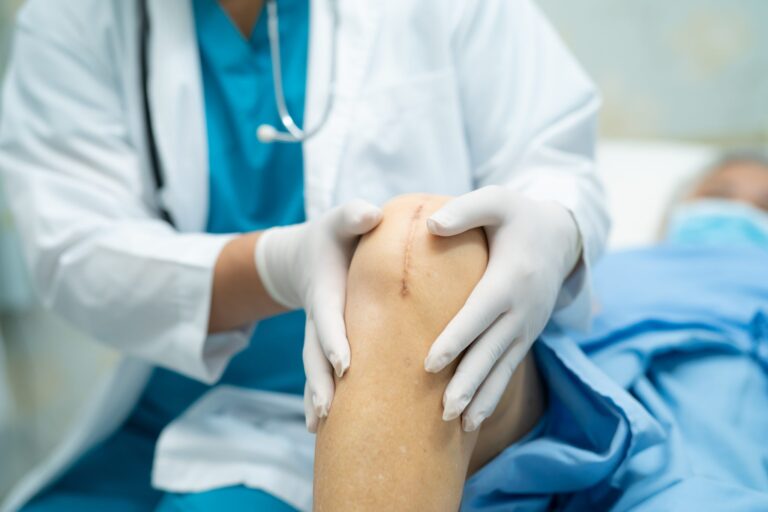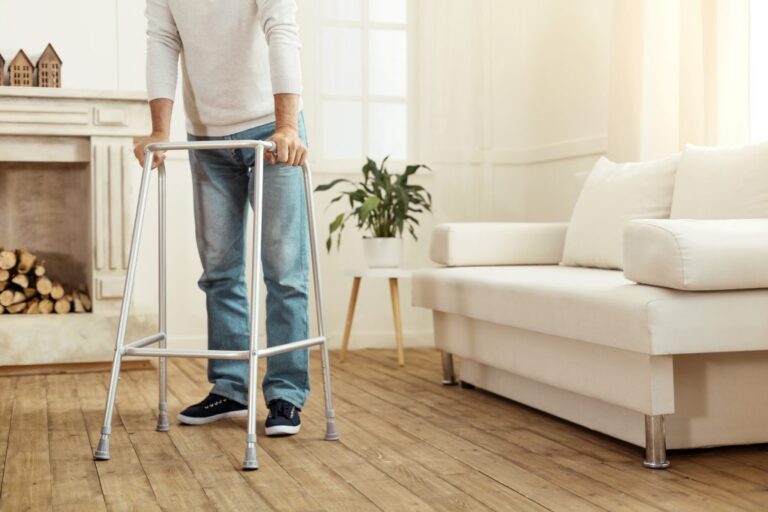What you Need to Know About Total Knee Replacement Recovery
April 23, 2023

Persistent knee pain can be frustrating for any individual. The pain can be unbearable, from having difficulty with simple daily tasks like walking, standing up, sitting, or bending down to get something from the floor.
If your knee pain is severe, you may be suffering from severe degenerative disease of the knee joint. This degenerative disease means that the cartilage covering the joints has signs of wear, and the bony ends are rubbing against each other. An orthopaedic doctor will arrange for assessments and imaging to confirm the diagnosis. After diagnosis, the doctor would likely recommend medication and rest or minimally invasive treatments such as injections or physiotherapy to reduce pain and strengthen the muscles around the affected joint.
However, if there is no improvement in the condition after minimally invasive alternatives, a doctor may recommend a total knee replacement (TKR).

The procedure, also called knee arthroplasty, involves the removal of damaged cartilage and bone from around the knee. Metal implants are attached to both sides of the knee joint in the correct alignment, at the end of the femur (thigh bone) and the end of the tibia (shin bone). A plastic spacer is then placed between those metal pieces to help the new joint move with ease. Modern techniques such as makoplasty involve the use of robotic technology to improve the accuracy and the safety of the procedure in the placement of the implants.
The back of the kneecap also gets a new base, which allows it to attach to the new compartments and move along with the knee joint. Total knee replacement is known to be an effective surgery which can improve the quality of life greatly. An orthopaedic doctor will arrange follow-up appointments with you after the procedure to continue post-operative rehabilitation.
Physical Therapy After Knee Replacement Surgery
After a knee replacement surgery, physical therapy or physiotherapy is often the next course of action prescribed. Research has shown that early post-operative rehabilitation leads to shorter hospital stays, lower painkillers intake and helps patients to start walking faster.
After an invasive procedure, such as a total knee replacement (“TKR”), there is a risk of blood clotting and a tendency for the treated knee to swell up due to the natural healing process. Physical therapy exercises right after a knee replacement surgery may consist of:
- Knee “range of motion” exercises to get the new joint moving and blood circulating well, reducing the risk of blood clotting and helping facilitate the reduction of the accumulated swelling.
- Swelling management using cryotherapy (ice therapy) to help in pain management.
- Muscle-strengthening exercises to help activate the muscles around the knee.
- Ambulation training to help you get up on your feet again and to begin walking as soon as your knee recovers. Ambulation training may also include the use of crutches and walking frames.
Timeline For Knee Replacement Surgery Recovery
The timeline for a full recovery from a total knee replacement surgery in Singapore may vary from person to person. However, you can expect your post-operation recovery to look like the following:

- Week 1-2 – Pain and swelling would be at their worst during this period. With physiotherapy and medication, you will start to mobilise and strengthen the knee. By getting in and out of bed and walking with assistance and aids after the operation, you should be able to wean off assistive devices by the end of the second week.
- Week 3-6 – Your normal knee range of motion should be improving at this stage, with good thigh muscle contraction. Using the stairs or walking independently for up to 300 metres without assistive devices should cause minimal pain and swelling.
- Week 7-12 – You will be able to go to work by this stage and walk freely. Your physical exercise routine will focus on strengthening the knee and consist of whole-body movements like squats or lunges.
- Week 12-16 – At this stage, you can resume sports and recreational activities and work with your physical therapist to achieve those goals, such as returning to cycling, golfing, and more.
Living With A Knee Replacement
Living with a knee replacement should be no different from your lifestyle before, as long as you stick with the rehabilitation journey. Aside from minimal scarring over the incision sites, you can look forward to staying active and keeping your muscles strong after your total knee replacement recovery in Singapore. Your orthopaedic doctor will have follow-ups with you after your surgery to ensure that you recover well and resume your everyday life as soon as possible.
How Long Does A Knee Replacement Last?
About 82% of total knee replacements and 70% of partial knee replacements can last up to 25 years before patients may require revision surgery. Occurrence of serious incidents may also disrupt the knee joint, such as after a car injury or fall from height.
Do I Need Revision Surgery After My Knee Replacement Surgery?
Most people who get a total knee replacement do not require revision surgery. Revision surgery is required only if
- The initial knee arthroplasty has not healed well due to an infection happening during the healing process. Excessive scar tissue built up around the knee and inadequate rehabilitation prevent the joint from moving entirely months after the surgery.
- The replaced knee suffers trauma from car accidents or falls directly to the knee, damaging the joint again.
- Aseptic loosening, where the body digests the particles between the bone and the implant and the bone itself (osteolysis), weakens the bone and implant.
If you are suffering from knee pain, make an appointment with a trusted orthopaedic surgeon as soon as possible.
Dr. Ananda Vella is a Singapore and Swiss-double-fellowship-trained MOH-accredited orthopaedic specialist consultant surgeon, As a former consultant from the Singapore General Hospital and Sengkang General Hospital and with more than 20 years of experience, Dr Ananda treats a variety of orthopaedic bone and joint conditions, including in his subspecialty focus of foot and ankle conditions, hip and knee pains, as well as sports injuries. Dr Ananda is also well-versed in minimally invasive surgical techniques, including having performed the first lateral total ankle replacement surgery in South-east Asia to improve outcomes for patients with severe arthritis.
Dr Ananda regularly practices in 3 clinics across Singapore and is accredited to operate in all private hospitals in Singapore. Should you have any queries or need any further assistance, please do not hesitate to schedule an appointment with our Dr Ananda by WhatsApp at 8860 0642 for assistance. Alternatively, please leave us a message via the enquiry form and we will get back to you as soon as possible.
(All Rights Reserved)



